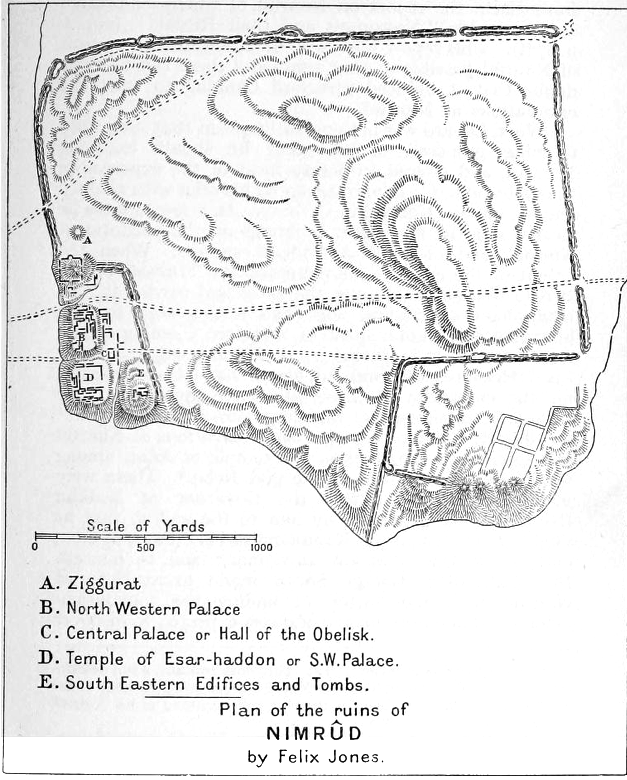|
Salmanu
Salmanu was king of Moab during the reign of the Assyrian king Tiglath-Pileser III (ruled 745– 727 BCE). He is mentioned in a clay inscription found in Nimrud as a vassal of Assyria. Eberhard Schrader theorized that he might be identical with the Shalman who waged war on Israel and sacked Beth-arbel (Hosea In the Hebrew Bible, Hosea ( or ; he, הוֹשֵׁעַ – ''Hōšēaʿ'', 'Salvation'; gr, Ὡσηέ – ''Hōsēé''), son of Beeri, was an 8th-century BCE prophet in Israel and the nominal primary author of the Book of Hosea. He is t ... ); though other scholars identify Shalman with one of the Assyrian kings named Shalmaneser. References {{Reflist Moab ... [...More Info...] [...Related Items...] OR: [Wikipedia] [Google] [Baidu] |
Moab
Moab ''Mōáb''; Assyrian: 𒈬𒀪𒁀𒀀𒀀 ''Mu'abâ'', 𒈠𒀪𒁀𒀀𒀀 ''Ma'bâ'', 𒈠𒀪𒀊 ''Ma'ab''; Egyptian: 𓈗𓇋𓃀𓅱𓈉 ''Mū'ībū'', name=, group= () is the name of an ancient Levantine kingdom whose territory is today located in the modern state of Jordan. The land is mountainous and lies alongside much of the eastern shore of the Dead Sea. The existence of the Kingdom of Moab is attested to by numerous archaeological findings, most notably the Mesha Stele, which describes the Moabite victory over an unnamed son of King Omri of Israel, an episode also noted in 2 Kings . The Moabite capital was Dibon. According to the Hebrew Bible, Moab was often in conflict with its Israelite neighbours to the west. Etymology The etymology of the word Moab is uncertain. The earliest gloss is found in the Koine Greek Septuagint () which explains the name, in obvious allusion to the account of Moab's parentage, as ἐκ τοῦ πατρός μου ("from my ... [...More Info...] [...Related Items...] OR: [Wikipedia] [Google] [Baidu] |
Shalman (Bible)
Shalman ( he, ''Šalman'') is an individual, presumably a king, that is mentioned in Hosea 10:14 as having sacked the city of Beth-Arbel. He is usually identified with the Assyrian kings Shalmaneser II (by Archibald Sayce) or IV (by François Lenormant). Eberhard Schrader argued that rather than Shalmaneser, Shalman was probably Salmanu, a king of Moab mentioned in an inscription of Tiglath-Pileser III Tiglath-Pileser III (Neo-Assyrian cuneiform: , meaning "my trust belongs to the son of Ešarra"), was the king of the Neo-Assyrian Empire from 745 BC to his death in 727. One of the most prominent and historically significant Assyrian kings, Tig .... References Monarchs in the Hebrew Bible {{bible-stub ... [...More Info...] [...Related Items...] OR: [Wikipedia] [Google] [Baidu] |
Neo-Assyrian Empire
The Neo-Assyrian Empire was the fourth and penultimate stage of ancient Assyrian history and the final and greatest phase of Assyria as an independent state. Beginning with the accession of Adad-nirari II in 911 BC, the Neo-Assyrian Empire grew to dominate the ancient Near East throughout much of the 8th and 7th centuries BC, becoming the largest empire in history up to that point. Because of its geopolitical dominance and ideology based in world domination, the Neo-Assyrian Empire is by many researchers regarded to have been the first world empire in history. At its height, the empire was the strongest military power in the world and ruled over all of Mesopotamia, the Levant and Egypt, as well as portions of Anatolia, Arabia and modern-day Iran and Armenia. The early Neo-Assyrian kings were chiefly concerned with restoring Assyrian control over much of northern Mesopotamia and Syria, since significant portions of the preceding Middle Assyrian Empire had been lost during a long ... [...More Info...] [...Related Items...] OR: [Wikipedia] [Google] [Baidu] |
Shalmaneser V
Shalmaneser V (Neo-Assyrian cuneiform: , meaning "Salmānu is foremost"; Biblical Hebrew: ) was the king of the Neo-Assyrian Empire from the death of his father Tiglath-Pileser III in 727 BC to his deposition and death in 722 BC. Though Shalmaneser V's brief reign is poorly known from contemporary sources, he remains known for the conquest of Samaria and the fall of the Kingdom of Israel, though the conclusion of that campaign is sometimes attributed to his successor, Sargon II, instead. Shalmaneser V is known to have campaigned extensively in the lands west of the Assyrian heartland, warring not only against the Israelites, but also against the Phoenician city-states and against kingdoms in Anatolia. Though he successfully annexed some lands to the Assyrian Empire, his campaigns resulted in long and drawn-out sieges lasting several years, some being unresolved at the end of his reign. The circumstances of his deposition and death are not clear, though they were likely violen ... [...More Info...] [...Related Items...] OR: [Wikipedia] [Google] [Baidu] |
Assyria
Assyria (Neo-Assyrian cuneiform: , romanized: ''māt Aššur''; syc, ܐܬܘܪ, ʾāthor) was a major ancient Mesopotamian civilization which existed as a city-state at times controlling regional territories in the indigenous lands of the Assyrians from the 21st century BC to the 14th century BC, then to a territorial state, and eventually an empire from the 14th century BC to the 7th century BC. Spanning from the early Bronze Age to the late Iron Age, modern historians typically divide ancient Assyrian history into the Early Assyrian ( 2600–2025 BC), Old Assyrian ( 2025–1364 BC), Middle Assyrian ( 1363–912 BC), Neo-Assyrian (911–609 BC) and post-imperial (609 BC– AD 630) periods, based on political events and gradual changes in language. Assur, the first Assyrian capital, was founded 2600 BC but there is no evidence yet discovered that the city was independent until the collapse of the Third Dynasty of Ur in the 21st century BC, when a line of independent kin ... [...More Info...] [...Related Items...] OR: [Wikipedia] [Google] [Baidu] |
Tiglath-Pileser III
Tiglath-Pileser III (Neo-Assyrian cuneiform: , meaning "my trust belongs to the son of Ešarra"), was the king of the Neo-Assyrian Empire from 745 BC to his death in 727. One of the most prominent and historically significant Assyrian kings, Tiglath-Pileser ended a period of Assyrian stagnation, introduced numerous political and military reforms and more than doubled the lands under Assyrian control. Because of the massive expansion and centralization of Assyrian territory and establishment of a standing army, some researchers consider Tiglath-Pileser's reign to mark the true transition of Assyria into an empire. The reforms and methods of control introduced under Tiglath-Pileser laid the groundwork for policies enacted not only by later Assyrian kings but also by later empires for millennia after his death. The circumstances of Tiglath-Pileser's rise to the throne are not clear. Because ancient Assyrian sources give conflicting accounts concerning Tiglath-Pileser's lineage and t ... [...More Info...] [...Related Items...] OR: [Wikipedia] [Google] [Baidu] |
745 BCE
Events *Crown of Assyria seized by Pulu, who took the throne name Tukulti-apil-Esharra. *End of the reign of Zechariah of Israel (746-745). *Suggested start of the reign of Menahem Ben Gadi of Israel. Births Deaths Suggested date for the death of King Shallum Shallum ("retribution") was the name of several people of the Old Testament. Shallum of Israel King of Israel. Alternative name of Jehoahaz King of Judah Son of Tikvah Keeper of the temple-wardrobe in the reign of Josiah (2 Kings 22:14) and hu ... of the ancient Kingdom of Israel References {{reflist 740s BC ... [...More Info...] [...Related Items...] OR: [Wikipedia] [Google] [Baidu] |
727 BCE
This article concerns the period 729 BC – 720 BC. Events and trends * 728 BC—Piye invades Egypt, conquering Memphis, and receives the submission of the rulers of the Nile Delta. He founds the Twenty-fifth Dynasty of Egypt. * 728 BC—Diocles of Corinth wins the stadion race at the 13th Olympic Games. * 727 BC—Babylonia makes itself independent of Assyria, upon the death of Tiglath-Pileser III. * 725 BC—Shalmaneser V starts a 3-year siege of Israel. * 725 BC—Sparta conquers the neighboring region of Messenia and takes over the land. * 724 BC—The Assyrians start a four-year siege of Tyre. * 724 BC—The '' diaulos'' footrace is first introduced at the Olympics. * 724 BC—Desmon of Corinth wins the stadion race at the 14th Olympic Games. * 722 BC—In the fifth month of the year during the summer, Duke Zhuang of Zheng defeats his younger brother Gongshu Duan () north of present-day Yanling County. * 722 BC—Northern Kingdom of Israel is conquered by Assyrian king Sargo ... [...More Info...] [...Related Items...] OR: [Wikipedia] [Google] [Baidu] |
Nimrud
Nimrud (; syr, ܢܢܡܪܕ ar, النمرود) is an ancient Assyrian city located in Iraq, south of the city of Mosul, and south of the village of Selamiyah ( ar, السلامية), in the Nineveh Plains in Upper Mesopotamia. It was a major Assyrian city between approximately 1350 BC and 610 BC. The city is located in a strategic position north of the point that the river Tigris meets its tributary the Great Zab.Brill's Encyclopedia of Islam 1913-36 p.923 The city covered an area of . The ruins of the city were found within of the modern-day village of |
Eberhard Schrader
Eberhard Schrader (7 January 1836 – 4 July 1908) was a German orientalist primarily known for his achievements in Assyriology. Biography He was born at Braunschweig, and educated at Göttingen under Ewald. In 1858 he won a university prize for a treatise on the Ethiopian languages, and in 1863 became professor of theology at the University of Zürich. Subsequently, he occupied chairs at Giessen (1870) and Jena (1873), and finally became professor of Oriental languages at the Friedrich Wilhelm University, Berlin in 1878. Though he turned first to biblical research, his chief achievements were in the field of Assyriology, in which he was a pioneer in Germany and acquired an international reputation. He died in Berlin. Works His publications include: *''Studien zur Kritik und Erklärung der biblischen Urgeschichte'' (1863). *Wilhelm Martin Leberecht de Wette's ''Einleitung in das Alte Testament'', 8th edition (1869). *''Die assyrisch-babylonischen keilinschriften'' (1872). * ... [...More Info...] [...Related Items...] OR: [Wikipedia] [Google] [Baidu] |
Hosea
In the Hebrew Bible, Hosea ( or ; he, הוֹשֵׁעַ – ''Hōšēaʿ'', 'Salvation'; gr, Ὡσηέ – ''Hōsēé''), son of Beeri, was an 8th-century BCE prophet in Israel and the nominal primary author of the Book of Hosea. He is the first of the Twelve Minor Prophets, whose collective writings were aggregated and organized into a single book in the Jewish Tanakh by the Second Temple period, forming the last book of the Nevi'im; but which writings are distinguished as individual books in Christianity. Hosea is often seen as a "prophet of doom", but underneath his message of destruction is a promise of restoration. The Talmud claims that he was the greatest prophet of his generation. The period of Hosea's ministry extended to some sixty years, and he was the only prophet of Israel of his time who left any written prophecy. Name The name ''Hosea'' (meaning 'salvation', 'he saves' or 'he helps'), seems to have been common, being derived from a related verb meaning ''sa ... [...More Info...] [...Related Items...] OR: [Wikipedia] [Google] [Baidu] |





